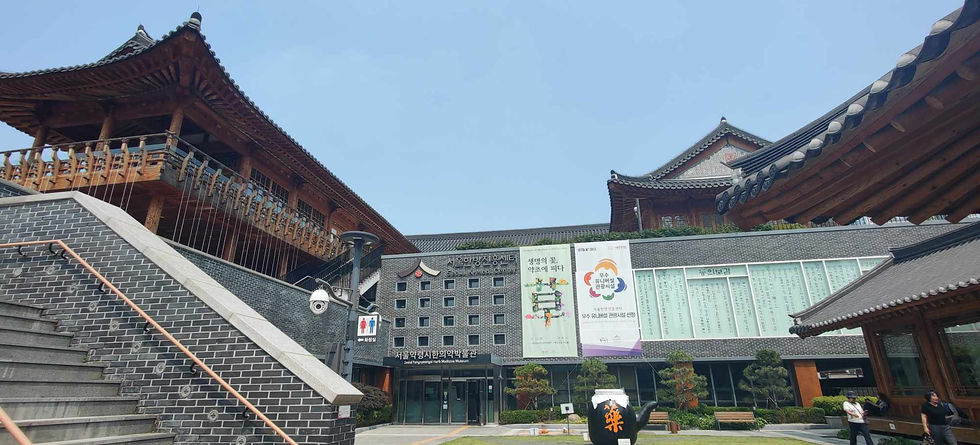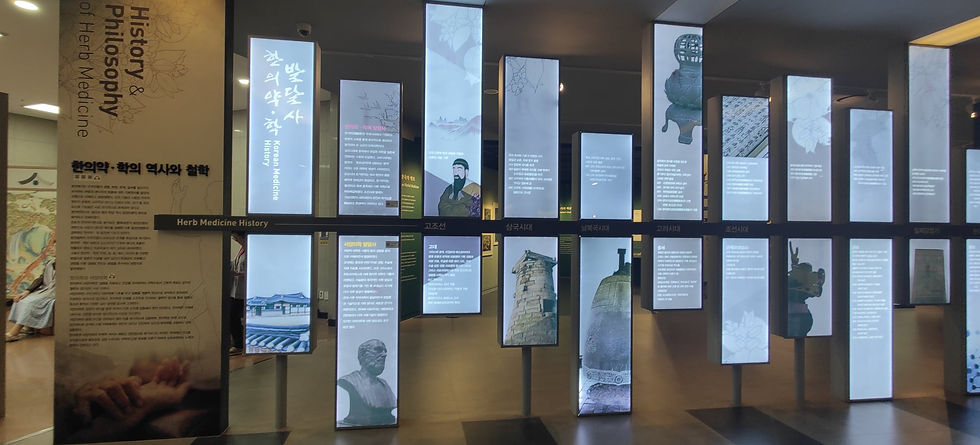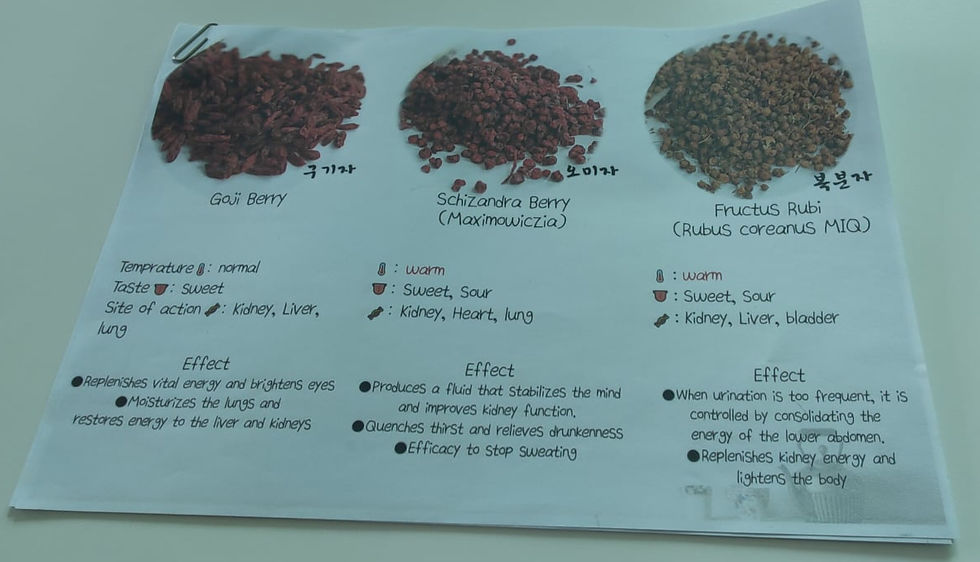Feel relaxed and rejuvenated with this Oriental medicine & tea tour in Seoul! Our experience & why you must try it!
- lewishooper1
- Jun 18, 2024
- 5 min read
For a long time, Oriental medicine has been a healing method for many Koreans, though what is making it a trend in Western culture today? Dojeon team member, Lewis, recently went on a tour to find out for himself. If you haven't read part 1 please do so first!
South Korea is so much more than K-dramas and K-pop, and for a long time now, I have been interested in Oriental medicine and the role that it plays in the medicinal market. Especially since I moved to Korea close to four years ago. Of course, this interest was also sparked by the popular Korean drama The Third Hospital which aired in 2012. In the drama the doctors compared Western and Eastern medicine, and naturally, there was a rivalry between the two brothers. Oriental medicine is popular with Korean idols and actors these days, allowing them to maintain a healthy diet, body and mind. I believe that the celebrity influence on Oriental medicine in modern times, is what helps to keep the traditions alive.

Dating back to the Joseon Dynasty oriental medicine has been popular due to the use of natural herbs and resources, unlike in Western medicine where chemicals are often used. While Koreans are notorious for pushing their kids to become doctors, it’s worth remembering that Koreans have cultivated their age-old approach to wellness for over 5,000 years. Hanbang – aka traditional Korean medicine – encompasses acupuncture, herbs and cupping and has lately attracted a surge of interest among both Korean Americans and Westerners.
For my tour, I met my guide at Seoul K Medi Center before heading in side to the museum itself. While I was waiting for my guide, I was able to enjoy the beautiful tranquil garden setting in the basking Korean sun, Being so close to the subway station, I was surprised at how relaxing it was here. For me the wooden oriental building of the coffee shop took me away a little, as it was very different from the surrounding buildings. When my guide arrived, he was very friendly and knowledgeable about the building and local area which was great.

Once we headed inside, we went to the second floor of the building and had the opportunity to look around the museum itself. I thought it was great that the information signs had English translations on and they helped a lot while I was looking around the exhibitions. I did not know too much about the different oriental medicines and their uses, however my guide was able to explain them to me in detail, and I thought it was great to learn about the herbs, and even animal parts, as if I visited the museum alone, I would not have got that information.

I am a very interactive person, and among the exhibits, there were some interactive sections for me to enjoy, where I was able to put in some of my key diet foods, and the computer would tell me roughly how much of each one to use to have a healthy diet. In addition to this, I was able to find out which ingredients I was lacking based on the information that I put in, and then it displayed what ingredients my body needed. I also really liked that there were old-style medicine cabinets with Chinese characters as it made my visit feel more special seeing how these medicines used to be stored.

Once we finished looking around the museum, we proceeded over to the outdoor foot bath area. Included in the tour was the admission for the footbath. My guide was able to translate the Korean and explain what I needed to do. Since the weather was so hot, the footbath was very welcome. The footbath area was outside on one of the roof areas, and it felt very tranquil with oriental music playing in the background, in the bustling city of Seoul, I was able to get some relaxation while soaking my feet. Of course, in the footbath itself were oriental salts to rejuvenate your feet.

I found all of the information at the foot spa to be interesting, as the brochure talked about healing points on your feet, and how to use the foot bath correctly in order to get full benefits.

To find out more information about the museum itself, visit the link below:
Now there are two ways to book the tour, either through "Trip advisor" or "Get your guide".
Tripadvisor link:
Get your guide link:
Meeting Location for the tour:
26, Yangnyeongjungang-ro, Dongdaemun-gu Jegi-dong, Seoul 02570 South Korea
How to get there:
Jegi-dong • 5 min walk
Cheongnyangni • 9 min walk

After the much-needed footbath, we headed to the guide's office, which was about a ten-minute walk from the museum. On the way were were shown different restaurants, and it was explained that some of the restaurants, use herbal medicine as part of the food ingredients in the meals that are served. It was also said that even though oriental medicine is an integral part of the Korean medical market, sadly not many young Koreans are choosing to study oriental medicine these days.
Once we arrived at the office, we were served a refreshing herbal drink to help hydrate and cool us down. Afterwards, we were given a sheet with different herbs which we were able to try as tea, and their benefits were explained to us.

I had always been interested in trying the 'Reishi mushroom' as I had seen it many times in Korean markets, so I opted for this choice and the other choices for teas which we also tried were 'Wormwood', 'Peony root' and 'Angelica root'. The 'Reishi mushroom' tea was very nice, and although the flavor was a little strong I really enjoyed it, as I did with the other choices.

I thought it was very interesting to be shown in detail how the teas were made, and the background behind them in terms of health benefits, origin and what they can help your body with.

We were also given some of the herbs to take away with us at the end of the tour which was a really nice touch.
If you are interested in oriental medicine, then why not take a look at the online store? Here you can find some fantastic gifts or items to treat yourself!
When visiting Seoul, this Oriental medicine and tea tour is definitely, something that you should book yourself on to. For me, it offered an alternative side to Seoul which I had not seen before, and helped me to understand Korean culture a lot more. Not only that, but my guide was amazing and very informative, and he had really good English as well, which definitely helped.
Let us know in the comments below if you have tried Oriental medicine & teas before!

Kommentarer